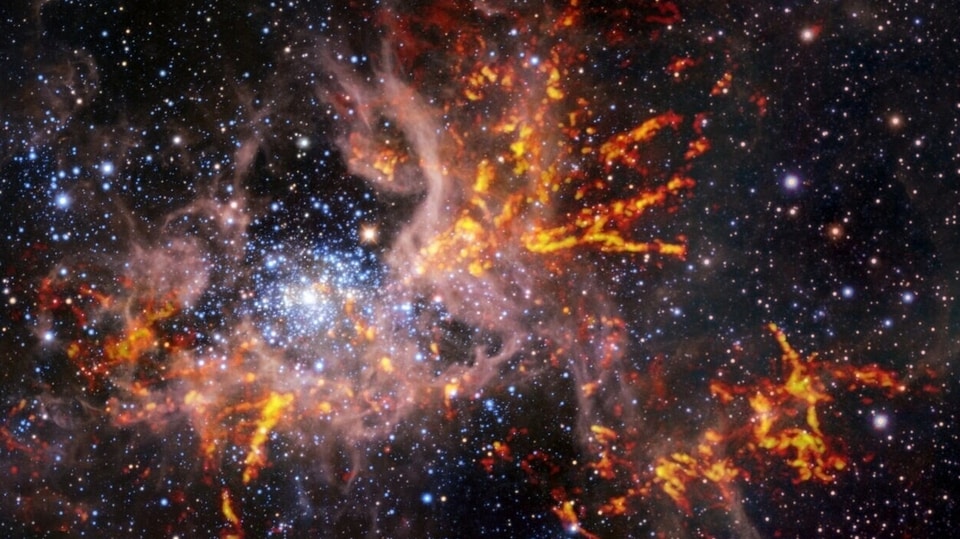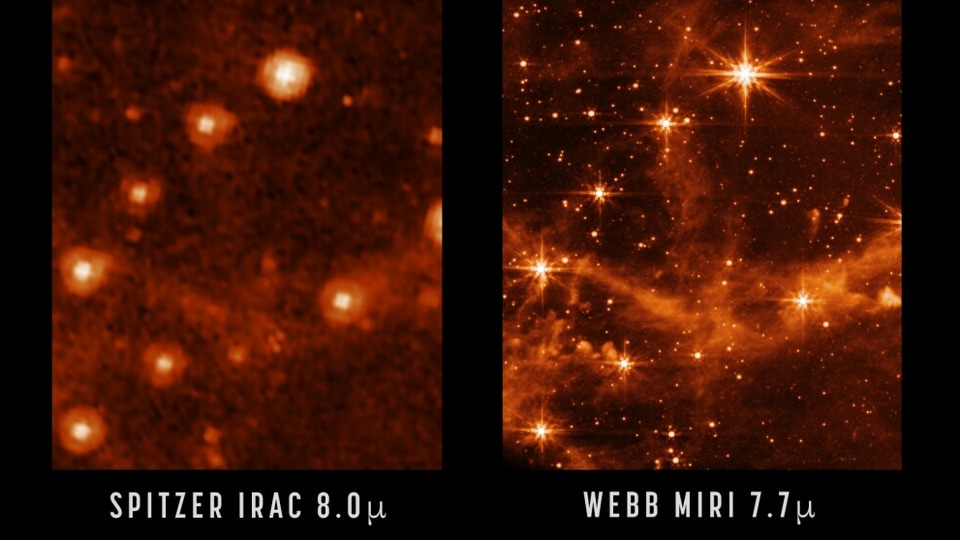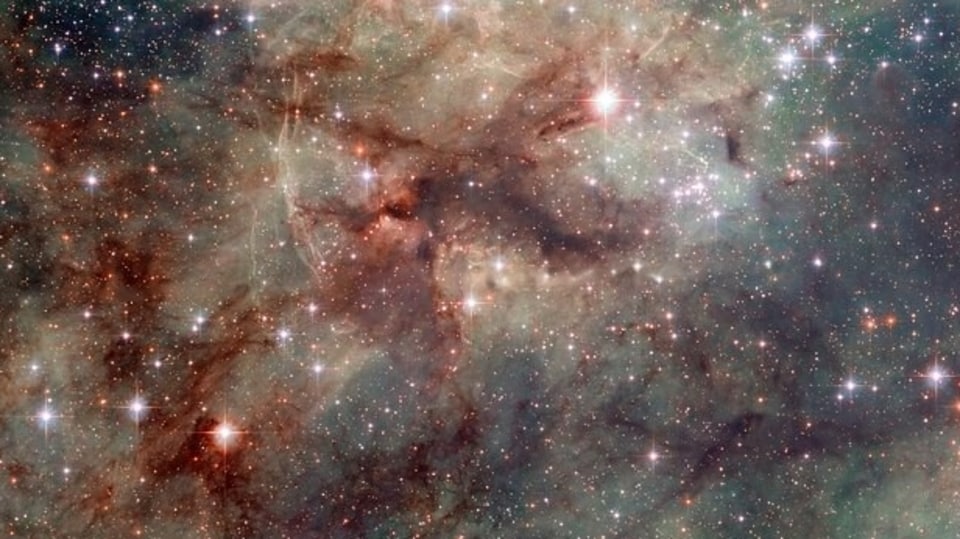James Webb Telescope, Chandra Observatory snap astonishing Tarantula Nebula image
NASA’s James Webb Space Telescope has teamed up with the Chandra X-ray Observatory to show an astonishing view of the Tarantula Nebula.






 View all Images
View all ImagesLast year, NASA's James Webb Space Telescope snapped the Tarantula Nebula, also called 30 Doradus, located in the Large Magellanic Cloud, a small neighbouring galaxy to the Milky Way Galaxy. It has long been studied by astronomers to better understand how stars like the Sun are born and evolve. Now, NASA's Chandra X-ray Observatory and James Webb Telescope have teamed up to reveal an astonishing view of the Tarantula Nebula. The new composite image combines X-ray data from the Chandra X-ray Observatory and infrared images from the James Webb Space Telescope to show a stellar view of the Nebula.
"The X-rays (royal blue and purple) reveal gas that has been heated to millions of degrees by shock waves — similar to sonic booms from airplanes — generated by the winds from massive stars," NASA said in a press release. Moreover, the data from the Chandra X-ray observatory also observes the remains of supernova explosions, which will ultimately send important elements such as oxygen and carbon into space where they will become part of the next generation of stars.
The infrared data from the Webb Telescope, which is highlighted in red, orange, green, and light blue colours, show the dazzling canvases of cooler gases in the Nebula, which provide the raw ingredients for future stars. It also shows “protostars” which are stars in their infancy.
More about Tarantula Nebula
NASA says that the chemical composition of 30 Doradus or Tarantula Nebula is different from usual nebulas in the Milky Way. “It represents the conditions in our galaxy that existed several billion years ago when stars were forming at a much faster pace than astronomers see today,” NASA says. The Tarantula is the closest example of what was happening in the universe as it reached its brilliant high noon. At only 161,000 light-years away in the Large Magellanic Cloud, the Tarantula Nebula is the largest and brightest star-forming region in the Local Group.
Catch all the Latest Tech News, Mobile News, Laptop News, Gaming news, Wearables News , How To News, also keep up with us on Whatsapp channel,Twitter, Facebook, Google News, and Instagram. For our latest videos, subscribe to our YouTube channel.





























